- Dasduino (Arduino-compatible)
- Inkplate
- easyC ecosystem
- Raspberry Pi & Micro:bit
- Breadboards & Cables
- Batteries & Power supplies
- Kids
- Sensors
- Actuators
- Communication
- Tools & Lab equipment
- Soldering kits
- Components
- Sale
Shop
24/7 free customer and technical support
Comprehensive documentation
Open-source hardware and software
2-year Warranty - no questions asked
Showing 1–24 of 690 resultsSorted by latest
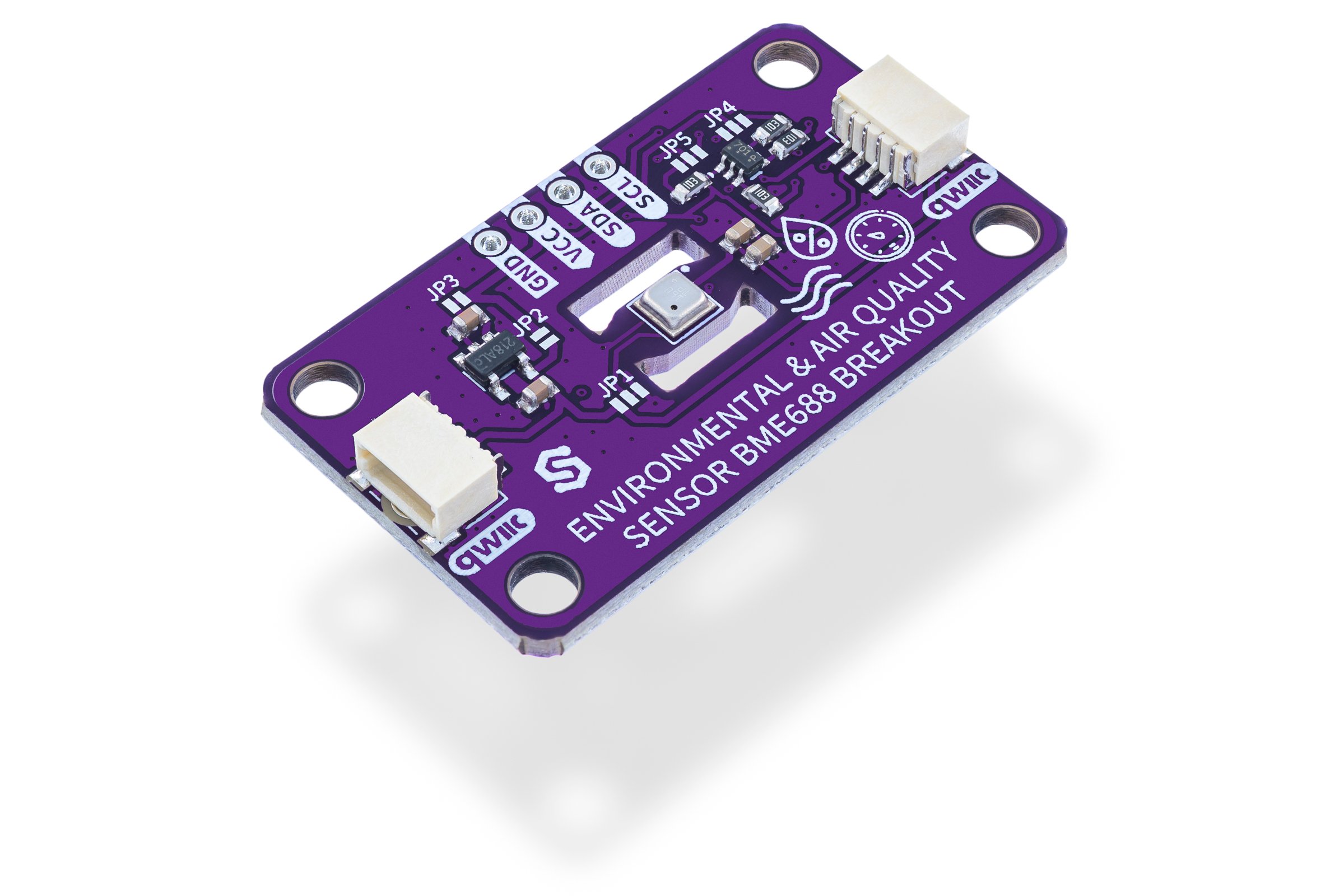
This is our most advanced multi-purpose environmental sensor yet, built around the cutting-edge Bosch BME688. It combines precise environmental monitoring with gas analysis capabilities, measuring organic compounds (VOCs), volatile sulfur compounds (VSCs), carbon monoxide, and hydrogen in the parts-per-billion (ppb) range alongside temperature, humidity, and barometric pressure.
Our Arduino and MicroPython libraries focus on providing reliable environmental data and basic gas detection, but you can supercharge your project by using the Bosch BME-AI Studio software for advanced AI features. Our breakout communicates exclusively via the I2C interface (up to 3.4 MHz), making integration straightforward with any microcontroller platform.
Designed for both industrial applications and makers, this breakout board includes dual Qwiic connectors for solderless, plug-and-play integration. Whether you are building an advanced air quality monitoring system, a smart HVAC controller, or conducting environmental research, the BME688 provides the precision and intelligence you need for comprehensive environmental sensing.
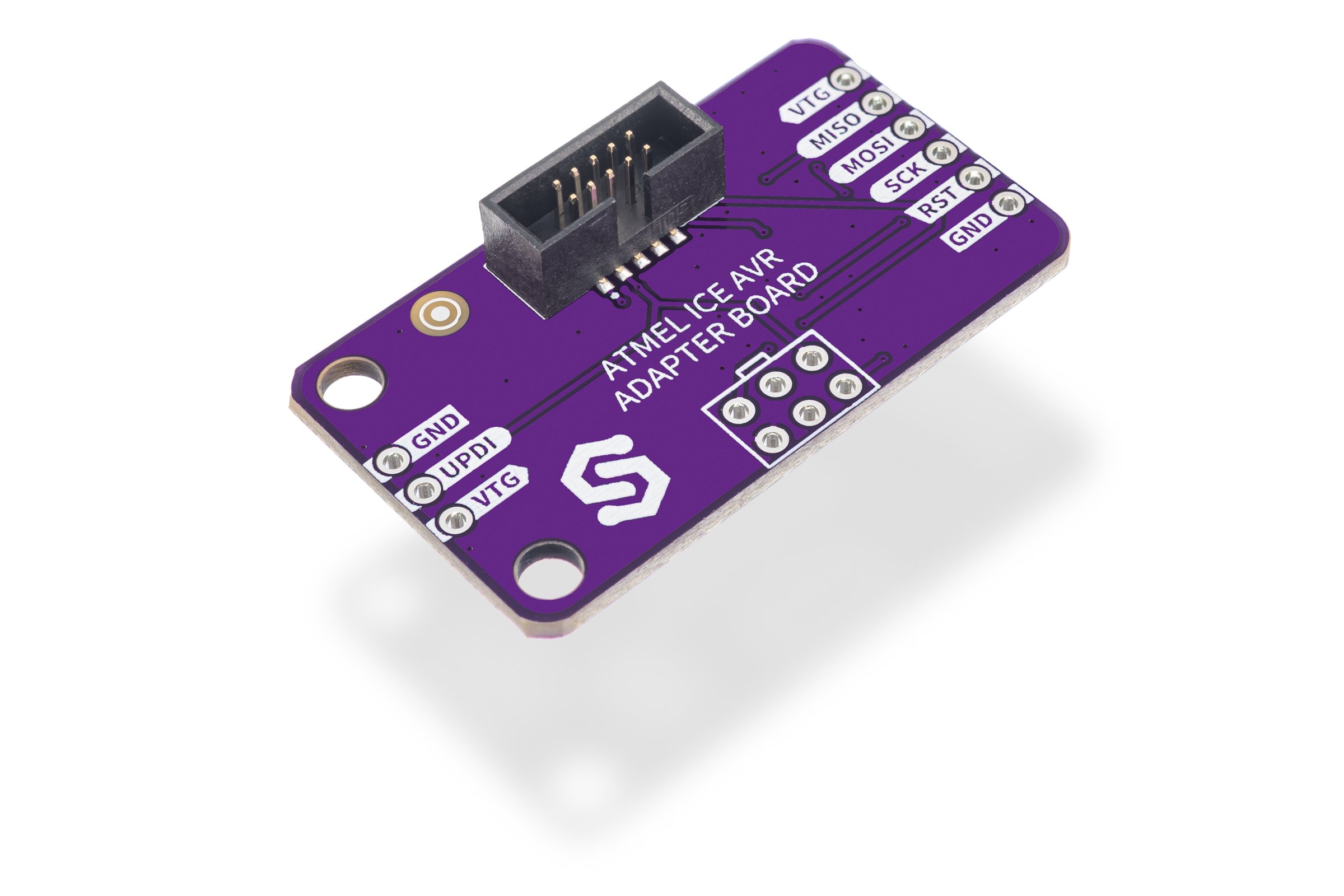
Upgrade your AVR programming workflow with the Atmel ICE compatible MakerICE Adapter AVR. This passive breakout board connects the 10-pin IDC port of the MakerICE to two common AVR programming interfaces: the 6-pin ICSP/ISP header and the 3-pin UPDI header.
Designed for simplicity and reliability, the adapter routes signals directly, with no complex wiring, jumpers, or extra configuration needed. Just plug your MakerICE into the 10-pin connector, select the appropriate header for your AVR device, and start programming or debugging.
Perfect for modern AVR development, including UPDI-based tinyAVR, megaAVR-0, and AVR Dx series, as well as classic ISP-programmed ATmega and ATtiny devices. Ideal for engineers, educators, and makers who want a clean, compact, and dependable programming setup.
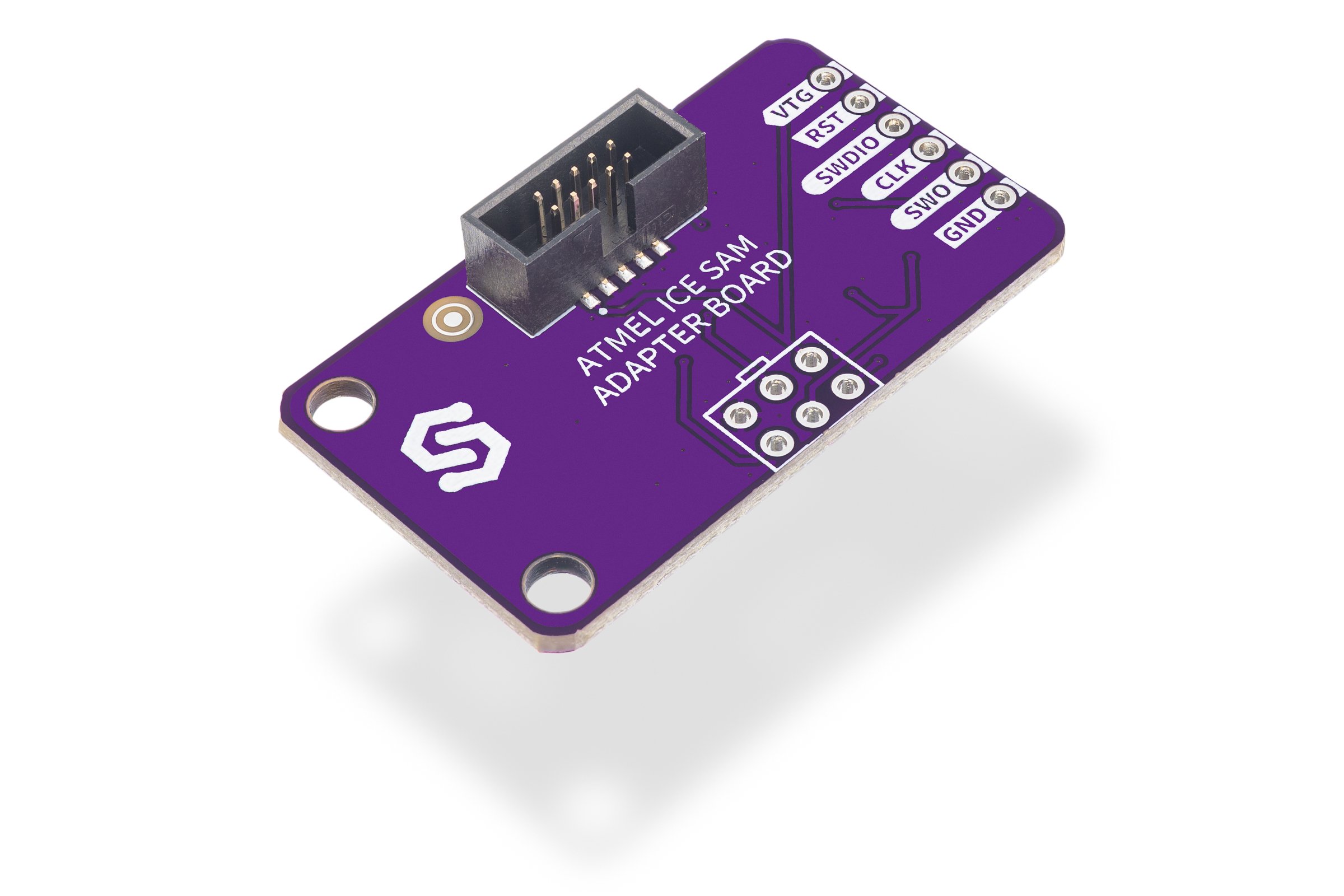
The MakerICE Adapter SAM is a compact, passive breakout board designed to connect the 10-pin ARM/SWD port of an Atmel ICE compatible programmer to a standard 6-pin SWD target header. It’s the simplest way to program and debug ARM-based SAM microcontrollers without messy jumper wires.
With direct signal routing for SWDIO, CLK, SWO, nRST, VTG, and GND, this adapter ensures reliable communication between your MakerICE SAM and any SWD-capable target. Ideal for engineers, educators, and advanced makers working with SAM devices, the board provides a stable, quick-connect interface for development and testing.
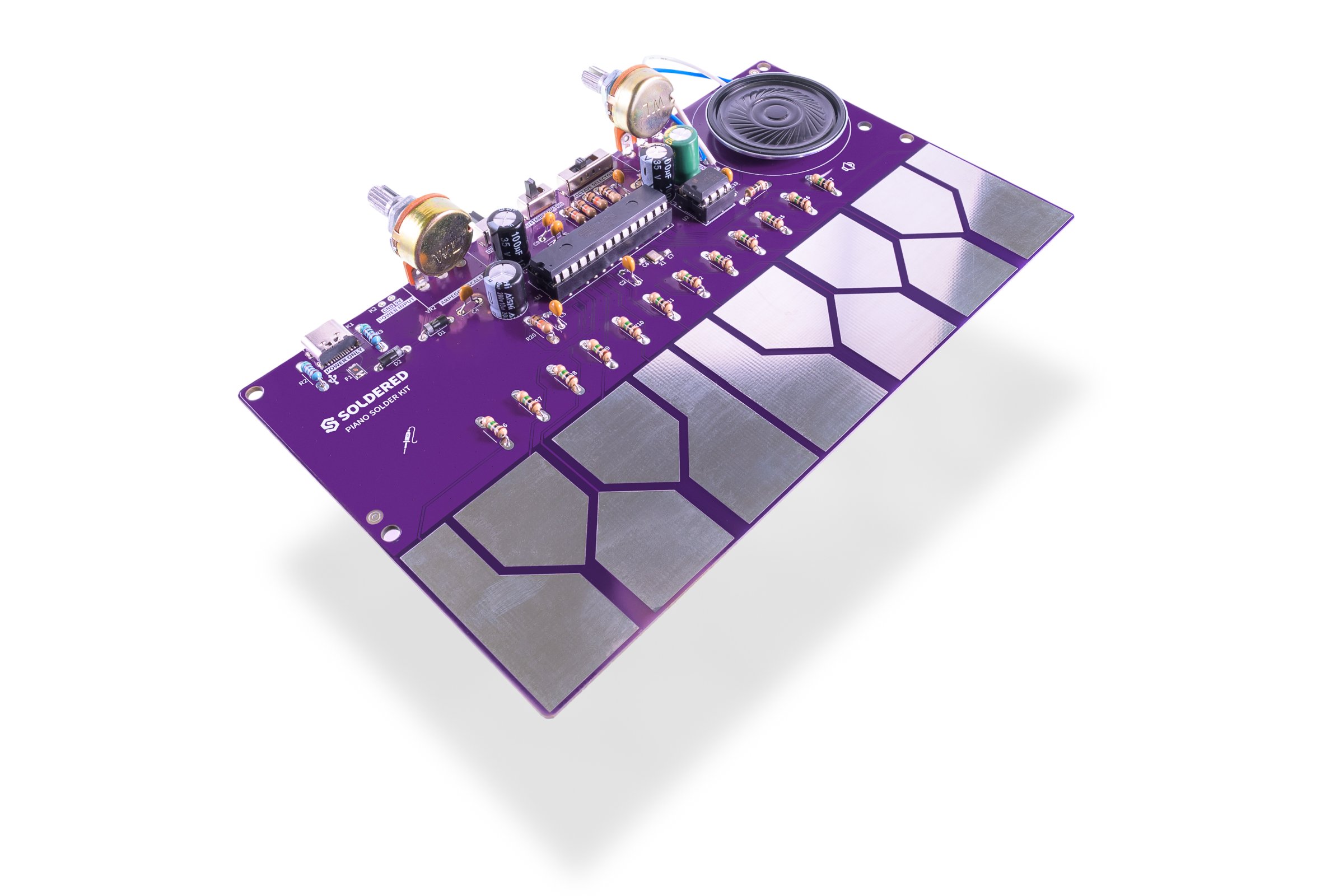
Learn the fundamentals of electronics and soldering while creating your own musical instrument. Perfect for beginners wanting to combine soldering education with entertainment, this kit teaches essential soldering techniques while building a fully functional capacitive touch piano. With 12 touch-sensitive keys, volume control, and multiple octave settings, you’ll create a musical instrument that demonstrates the magic of capacitive sensing technology. Take a look at our complete documentation for step by step assembly.
Built around the Atmega328P microcontroller, this kit introduces you to both hardware assembly and embedded programming concepts. The 12 capacitive touch sensors respond to fingers without mechanical switches, demonstrating touch interface technology. The first potentiometer provides volume adjustment, while the other one provides arpeggio speed control. The USB-C power connection ensures modern connectivity and power delivery for extended musical sessions.
This kit perfectly balances learning with entertainment, teaching essential electronics assembly skills while creating an amusing device. The capacitive touch technology introduces modern sensor concepts, while the code pre-programmed on the AtMega328p microcontroller is available to inspect on GitHub and provides insight into how embedded systems work. Perfect for STEM classrooms, maker spaces, or personal skill development. You’ll learn valuable soldering techniques while building something musical and interactive.
This set includes:
-
PCB: Professional-quality circuit board with clear component markings
-
LM386 Audio Amplifier IC for optimal speaker power
-
Atmega328P: Pre-programmed microcontroller ready for assembly
-
2 Potentiometers: Volume and arpeggio speed controls
-
Switches: Arpeggio mode ON/OFF, octave selector
-
8 ohm Speaker included – easily solder on and listen to your piano
-
USB-C Connector: Modern power input interface
-
12 Touch Sensors: Capacitive touch interface components
-
Resistors, capacitors, diodes and other various electronic components to practice soldering
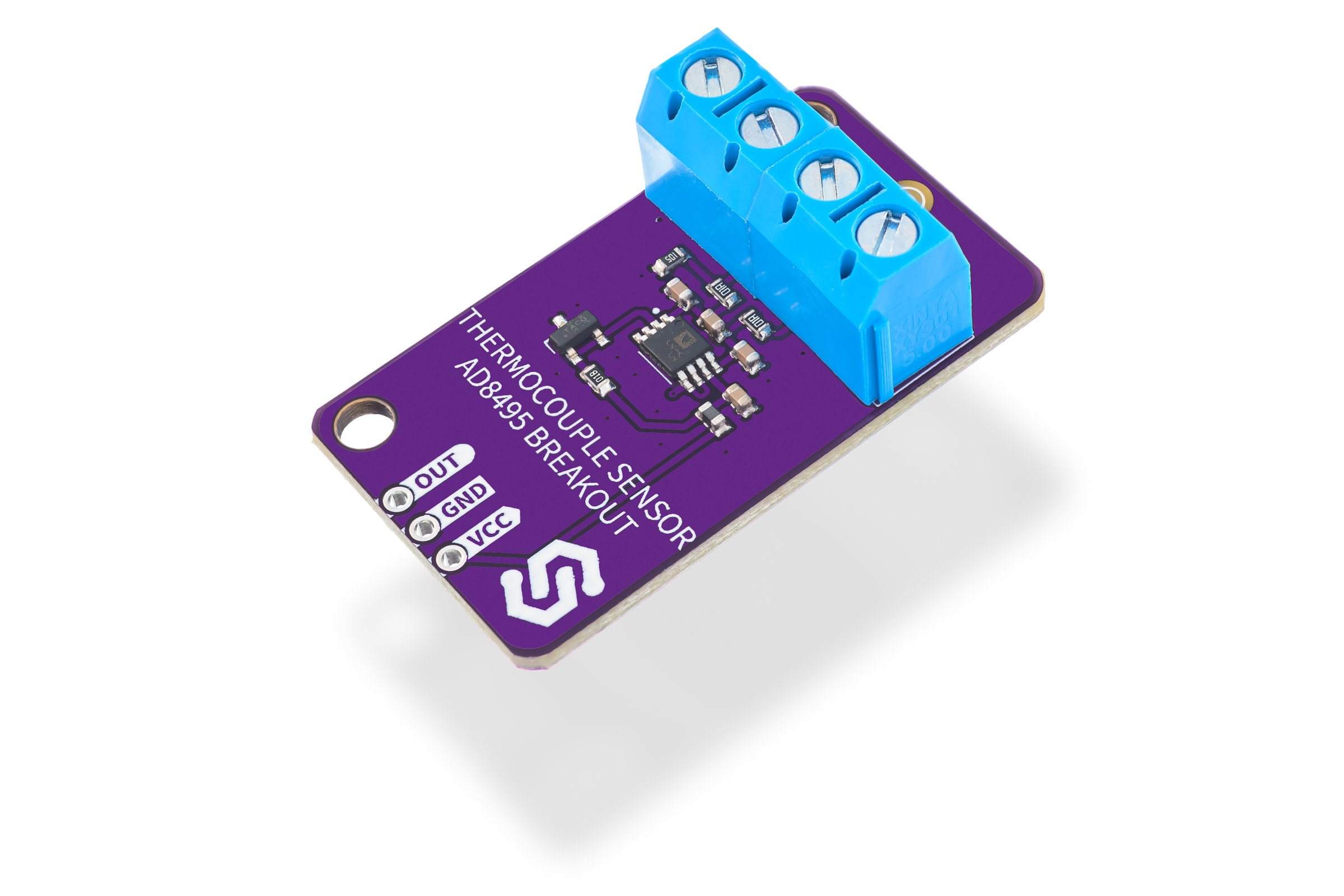
Measure extreme temperatures from -25°C to +400°C with precision using our AD8495 K-Type thermocouple sensor breakout. Perfect for industrial monitoring, 3D printer hotends, furnace control, and high-temperature research applications, this sensor provides accurate temperature readings where standard sensors fail. The built-in cold junction compensation (CJC) eliminates the need for external reference temperature measurement, while the linear 5mV/°C output makes integration with Arduino and other microcontrollers straightforward and reliable.
Engineered around the precision AD8495 chip, this breakout board features built-in cold junction compensation with ±1°C typical accuracy within 0-50°C ambient range. The wide supply voltage range (2.7V to 36V single supply, or 2.7V to 18V dual supply) ensures compatibility with various power systems, while the ultra-low 180µA typical supply current makes it perfect for battery-powered applications. The 1.25V typical output at 0°C provides a stable reference point for accurate temperature calculations.
Essential for monitoring 3D printer hotends, industrial furnace control, measuring exhaust gas temperature in automobiles, temperature monitoring in food processing, and scientific research requiring precision at high temperatures. Compatibility with K-Type thermocouples and high accuracy make this sensor ideal for both hobby projects and industrial automation systems where reliable measurement is crucial.
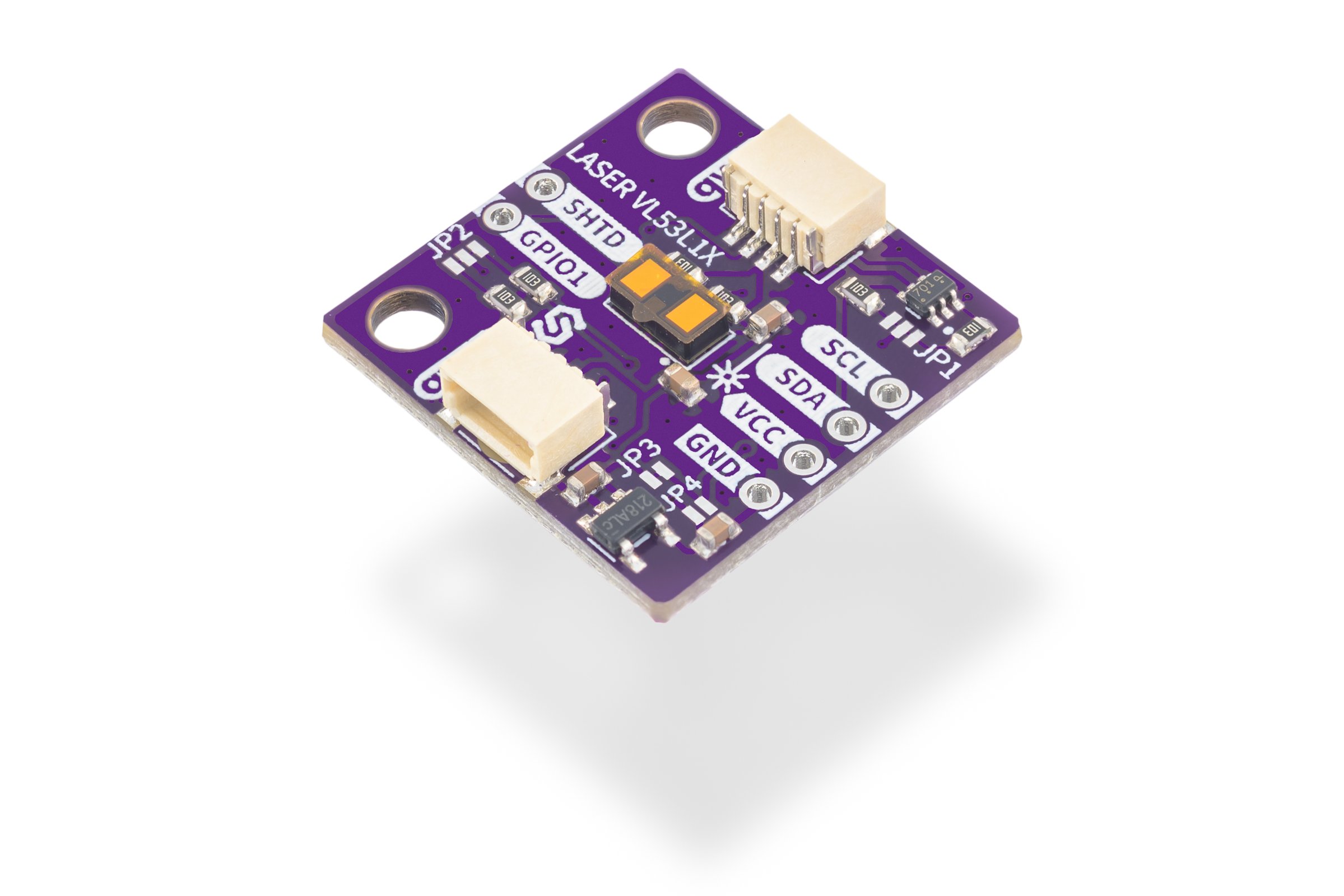
Achieve precise distance measurements from 30mm to 4 meters with the VL53L1X Time-of-Flight laser sensor. Perfect for robotics, drones, and automation projects, this invisible 940nm Class 1 laser provides fast and accurate ranging at up to 50Hz frequency. Whether you’re building obstacle-avoiding robots, drone landing systems, or smart shelves, this sensor delivers the precision and speed your projects demand. The programmable Region of Interest allows you to adjust the field of view from 15° to 27°, optimizing detection for your specific needs.
Built on the advanced VL53L1X chip, this breakout board features a standard I2C interface with programmable addressing (default 0x29) and supports up to 400kHz communication speed. Operating from 2.6V to 3.5V with ultra-low standby consumption of just 6µA, it’s perfect for battery powered projects. The compact 22x22mm form factor with two lego-compatible mounting holes makes integration simple, while the wide operating temperature range (-10°C to +70°C) ensures reliable performance in demanding environments.
Ideal for service robots and automation systems requiring long distance obstacle detection, drone navigation systems for landing assistance and ceiling detection, smart shelves and vending machines for inventory management, and user detection systems for automatic device control. The sensor’s high-speed ranging capability and programmable features make it perfect for both hobbyist projects and professional automation systems. Quick, responsive and precise, truly the 2.0 experience of what you would expect from a traditional distance sensor!

The Raspberry Pi AI HAT+ turns your Raspberry Pi 5 into a powerful, energy-efficient AI platform thanks to its integrated neural network accelerator.
Available in 13 or 26 TOPS performance variants, it’s suitable for everything from entry-level projects to running complex AI models and multiple inference tasks simultaneously. With support for popular frameworks like TensorFlow and PyTorch, it enables a wide range of applications — from smart cameras and home automation to industrial process control and research.
The AI HAT+ is fully integrated into Raspberry Pi’s camera software stack (rpicam-apps), enabling real-time post-processing tasks like object detection, image segmentation, and pose estimation — directly on the device.

The Raspberry Pi 5 with 16GB RAM continues the evolution of the Pi family with 2–3x faster CPU performance and a much more powerful VideoCore VII GPU. It includes major upgrades across display, camera, and USB interfaces.
At its core is the RP1 I/O controller, enabling faster peripheral access—from USB 3.0 ports to display and camera enhancements—all while keeping things efficient and stable.
Raspberry Pi 5 – 16GB is designed for professionals and demanding users who require maximum memory for virtualization, AI/ML tasks, image processing, or continuous 24/7 operation. It’s compact, powerful, and built for intensive workloads.

The Raspberry Pi AI Camera is the latest addition to the Raspberry Pi camera family, specifically designed for projects that require real-time image processing and artificial intelligence. It’s powered by the advanced Sony IMX500 Vision Sensor with a built-in AI accelerator, allowing neural network inference directly on the camera — without taxing the main processor.
Whether you’re building a smart surveillance system, vision-enabled robotics, or an AI-based object recognition solution, this camera delivers power and flexibility in a compact form factor — with full compatibility across all Raspberry Pi models, including the Raspberry Pi Zero.

The Raspberry Pi 5 with 8GB RAM continues the evolution of the Pi family with 2–3x faster CPU performance and a much more powerful VideoCore VII GPU. It includes major upgrades across display, camera, and USB interfaces.
At its core is the RP1 I/O controller, enabling faster peripheral access—from USB 3.0 ports to display and camera enhancements—all while keeping things efficient and stable.
Raspberry Pi 5 – 8GB is ideal for users who need more memory for multitasking, development tools, local servers, or working with multiple sensors and cameras. It offers flexibility for more complex projects without compromise.

USB Type C Female to USB type A Male Converter.



The BASIC tool set is an ideal choice for basic electronics repairs and work. It includes all the necessary tools and materials to make repairs and maintenance easier. A full list of tools can be found below. The set includes a AC screwdriver tester, allen key, cutting pliers, soldering iron, desoldering pump, wire, and a soldering iron stand.

Introducing the Raspberry Pi 5 – 4GB a powerful microcontroller designed for makers and enthusiasts! With a quad-core ARM Cortex-A76 processor running at up to 2.4GHz, this board offers lightning-fast performance for your projects. Boasting 4GB of RAM, it effortlessly handles multitasking and complex applications. The Raspberry Pi 4GB also features improved graphics and connectivity options, including dual-display support and USB 3.0. Whether you’re diving into IoT, robotics, or multimedia applications, the Raspberry Pi 4GB is your go-to board for endless creativity!

Introducing the Raspberry Pi Zero 2 W—a compact yet powerful microcontroller that packs a punch! Featuring a quad-core ARM Cortex-A53 processor running at 1GHz, 512MB RAM, and built-in wireless connectivity, this little powerhouse is perfect for your next project. Its small size and versatile GPIO pins make it ideal for everything from DIY gadgets to robotics. With a user-friendly design and support for various programming languages, the Zero 2 W is an essential tool for makers and enthusiasts alike. Get creative with your projects!

The Raspberry Pi Pico is a flexible, high-performance microcontroller built for makers, students, and DIY enthusiasts. Featuring the RP2040 dual-core ARM Cortex-M0+ processor at 133MHz and 264KB of SRAM, the Pico brings serious computing power to small projects. With USB programming, GPIO flexibility, and compatibility with both MicroPython and C/C++, it’s perfect for IoT, robotics, and countless other creative applications. Its innovative design allows for straightforward soldering onto custom boards, making the Pico an indispensable tool for any maker.

The Raspberry Pi Pico 2 is a versatile and powerful microcontroller designed for makers and enthusiasts. It features dual ARM Cortex-M33 or dual Hazard3 RISC-V processors at 150MHz, 520KB of onboard SRAM, and is software-compatible with the Raspberry Pi Pico 1, making it ideal for fast and demanding projects. With USB 1.1 support and flexible GPIO pins, it’s perfect for IoT, robotics, and all projects that require real power in a compact package. Ready to work with MicroPython and C/C++, the Pico 2 is your board for endless possibilities.

This high-quality solder wire (Sn63Pb37) offers a 63/37 tin-lead ratio, ideal for precision electronics work. With a 1mm diameter and 17g weight, it provides excellent flow and smooth joints for reliable connections. Perfect for professionals and hobbyists, this wire ensures strong, durable soldering with low melting temperature and minimal residue. Suitable for a wide range of applications, from circuit boards to delicate components. Packaged at 17g, it’s lightweight and easy to handle, making it a great addition to any toolkit.

This high-quality solder wire offers excellent performance with a composition of 99% tin, 0.7% copper, and 0.3% silver. Ideal for precision soldering, it provides strong joints and reliable conductivity. The 1mm diameter is perfect for electronics, circuit boards, and general repairs. Packaged at 17g, it’s lightweight and easy to handle, making it a great addition to any toolkit.

Ensure protection and aesthetics for your Inkplate 6 MOTION with our high-quality 3D-printed case. Designed with precision and made from durable filament, this case fits your device perfectly, providing additional protection against damage and dust.
An elegant choice of colors gives your Inkplate a sophisticated look, while carefully placed openings allow easy access to all ports and controls.

The Inkplate 6 MOTION is a supercharged 6-inch e-paper display with a resolution of 1024×758 pixels and support for partial updates. It offers an accelerated refresh rate of 91 ms (up to 11 frames per second), significantly outperforming other DIY e-paper devices, providing smoother motion, less lag, and sharper updates. It also supports 4-bit grayscale, allowing a total of 16 shades on the screen. Powered by a dual-processor setup, the 32-bit STM32H743 microcontroller and ESP32-C3 co-processor, this versatile display integrates seamlessly into dynamic projects, enabling real-time content for applications like animations, interactive menus, or smart-home interfaces.
Its impressive sensor array includes the LSM6DSO32 accelerometer and gyroscope, Sensirion SHTC3 temperature and humidity sensor, and APDS-9960 gesture and proximity sensor, making it ideal for highly interactive environments. The front-facing RGB programmable LED adds customizable visual indicators, enhancing interactivity. Additional hardware features include a microSD card slot, USB-C programming port, multiple GPIO pins for expansions, RTC, a rotary encoder, and 3 button inputs on the sides. It can be easily expanded using the onboard easyC ecosystem if needed.
The device’s MCP73831 battery charger and low-power design (only 22 μA in low-power mode) ensure long-term performance on battery power. With full support for Arduino, as well as numerous ready-to-use examples, developers can quickly integrate the Inkplate 6 MOTION into a variety of projects, from real-time data displays to smart-home systems and digital signage. The Inkplate is, of course, 100% open-source.
Its eco-friendliness, along with high-quality craftsmanship, makes it an ideal choice for anyone looking to build sustainable and innovative electronic projects. The Inkplate 6 MOTION uses screens recycled from old e-book readers, which is extremely environmentally friendly. Although minor damage such as scratches is possible due to the screen recycling, all screens with significant damage are not used in production, ensuring high quality.
Inkplate 6 MOTION options:
With e-paper display & enclosure: This version offers a sturdy and sleek enclosure for your device, made with precision from a 3D printer. It’s perfect for those who want an extra layer of protection without any added features.
With e-paper display, enclosure, and battery: Upgrade to this version if you’re looking for both protection and mobility. This option includes a 3D-printed enclosure as well as an 1200 mAh integrated battery, ensuring your device stays powered even on the go.
Without e-paper display: For those who prefer a simpler or alternative display solution, this version does not include the e-paper display. It’s ideal for users who have their own display solutions or prefer to use the device without a visual interface.
Choose the one that best fits your needs and enhance your experience!

Introducing the Inkplate 5 Gen2, a versatile board compatible with Arduino and MicroPython technologies, featuring a recycled 5.2″ E-Ink (e-paper) display with fast refresh times of just 0.22 seconds. This fully open, plug-and-play device, powered by the ESP32 microcontroller, is designed for effortless internet connectivity via WiFi or with other devices via Bluetooth.
Its energy-efficient design allows for ultra-low power consumption, enabling it to operate for months on a single charge of a Li-ion battery. The Inkplate 5 Gen2 is not only about power and connectivity; it’s also about convenience. The built-in microSD slot and real-time clock provide unlimited data storage possibilities and precise timekeeping. The device even features numerous GPIO pins, allowing easy expansion of your projects with almost any peripheral device.
The e-paper display of the Inkplate 5 Gen2 offers visual delight. It provides a beautiful, sharp image under all conditions, including direct sunlight, which is always on. The display resolution is 720×1280 pixels, in monochromatic mode, supporting black, white, and 6 shades of gray. The most interesting part? The E-Ink display requires no power between screen updates.
The Inkplate 5 Gen2 refreshes at a speed of 0.99s for a full refresh and 0.22s for a partial refresh.
Our device is a fantastic starting point for those wanting to experiment with E-Ink technology, all neatly packaged in a compact board.
Inkplate 5 Gen2 options:
- With e-paper screen & casing: This version offers a sturdy and elegant casing for your device, made with precision from a 3D printer. Perfect for those who want an extra layer of protection without additional features.
- With e-paper screen, casing, and battery: Upgrade to this version if you seek protection and mobility. This option includes a 3D-printed casing as well as an 1200 mAh integrated battery, ensuring your device stays powered even on the go.
- Without e-paper screen: For those who prefer a simpler or alternative display solution, this version does not include an e-paper screen. Ideal for users who have their own display solutions or prefer to use the device without a visual interface.
Choose the one that best suits your needs and enhance your experience!

Inkplate 6 FLICK is a plug-and-play device featuring a 6.0″ e-paper display with a resolution of 1024×758 pixels. Its main advantage is the ease of use—simply plug in the USB-C cable, open the Arduino IDE, and within minutes, your content will be displayed! With numerous ready-made examples and comprehensive documentation, getting started is extremely easy, and developing more complex projects is also significantly simplified.
This board stands out from the rest of the Inkplate series because it comes with touchscreen functionality supporting two simultaneous touches and built-in lighting that can be controlled in 64 steps, making it ideal for interactive displays. With an exceptionally fast refresh rate of under one second, it also supports greyscale (displaying shades of grey, not just black and white) and “partial updates”—refreshing only part of the screen, which is faster and more visually appealing.
The board is based on the popular ESP32 microcontroller, providing sufficient processing power to manage the screen, as well as WiFi and Bluetooth connectivity. If you choose the version with a lithium battery, you can take advantage of its extremely low power consumption of just 23µA in deep sleep mode, allowing for months of use without recharging. The board also includes a Li-ion battery charger, a microSD card slot, a Real Time Clock, and numerous GPIO pins for connecting additional electronics and expanding the capabilities of the Inkplate.
Its environmental friendliness, combined with high build quality, makes it an ideal choice for those looking to create sustainable and innovative electronic projects. The Inkplate 6 FLICK uses screens recycled from old e-book readers, which is extremely eco-friendly. While minor imperfections like scratches may occur due to recycling, all screens with significant damage are not used in production, ensuring high quality.


